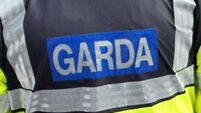Greenpeace attempts to stop whalers
Also yesterday, Norway increased the quota for its commercial whale hunts by more than 30% to the highest level since hunts resumed in 1993.
Speaking from the Greenpeace ship Arctic Sunrise off the Antarctic coast, expedition leader Shane Rattenbury said the Sunrise and sister ship Esperanza had tracked down the Japanese whaling vessel Nisshin Maru.
“This morning we witnessed a whale being harpooned... we positioned our two ships to the stern of the Japanese mother ship in order to prevent the whale being transferred onto the ship and we were successful in stopping that process for about 45 minutes,” Rattenbury said.
The Japanese boat fought back with water cannons, he said.
One of the smaller Japanese whale capture boats then rammed one of the Greenpeace ships to try and push it clear of the whale loading process.
Norwegian whalers will be allowed to harpoon 1,052 minke whales next year, compared to a quota of 797 animals for the season that ended in October, the fisheries minister said.
The Nordic nation of 4.6 million people enraged environmentalists and many governments by resuming commercial whale hunts in 1993 despite a global ban.
Norway argues that minke whales, the largest of the baleen whales at up to nine metres, are plentiful off its coast and can sustain a controlled hunt.
In New Zealand, conservation workers and volunteers used a high tide to re-float about 110 pilot whales from a beach where they became stranded on New Zealand’s South Island on Tuesday.













